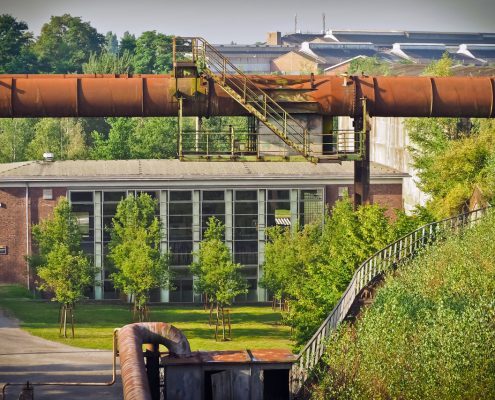How Pipeline Survey Companies Are Using Drones to Improve Safety
For pipeline survey companies, keeping up with the latest technologies is necessary to provide clients with the quick, accurate survey results they need to succeed in a changing construction landscape. In addition, new technologies such as drone surveying can also play an important role in improving safety on the job site. This post will take a closer look at how groundbreaking pipeline survey companies are already using drone surveying technology to improve safety for pipeline surveyors, construction workers, and people living near the right of way.
Conduct planning and data collection without putting surveyors on the ground
First and foremost, drone surveying provides a safer experience than traditional surveying methods because it allows surveyors to cover large amounts of terrain without having to venture into that terrain themselves. This is noteworthy because the land itself can be a major source of threats for pipeline surveyors.
When a proposed pipeline route crosses difficult terrain, goes near a dangerous water crossing, or cuts through wild animal habitats, there are risks involved with having workers conduct data collection in those areas. With drone surveying, workers can collect all the data they need about these potential problem areas without having to set foot in them. By avoiding these threats altogether, surveyors can ensure a data collection process that is uninterrupted by time-consuming and dangerous accidents.
Construction monitoring
After the project itself is underway, drone surveying can continue to play a pivotal role in ensuring the safety of workers by making it easier to conduct construction monitoring.
Surveying companies may wish to conduct construction monitoring to gather project data to be used in as-built surveys and other forms of project documentation. What’s significant about using drone surveying to complete this monitoring is that drones can work around the construction workers as they perform their tasks. Not only does this save time by removing the need for project shutdowns, but it also helps remove risk, as it allows both the construction workers and the surveyors to complete their respective tasks without getting in each other’s way.
Post-construction documentation and analysis
Once the project has been completed, there are still a variety of opportunities to use drone surveying to increase safety. For instance, drones can be used to survey finished projects to verify that the project has been completed as planned and that there are no potential safety issues.
Drones can complete this kind of surveying faster and with a higher degree of detail than could be achieved with traditional surveying methods. Simply put, this means that drones are more likely to find safety issues if they do exist, and to find them quickly so that they can be addressed without delaying the opening of the pipeline.
Routine maintenance and inspection
Finally, drone surveying can be used to help increase safety even after the pipeline is up and running. Pipeline leaks and other malfunctions can present a serious source of risk for people living near the pipeline. At the same time, manually monitoring for issues can be time consuming and expensive, and presents its own risks for the people assigned to do the monitoring.
With drone surveying, companies can monitor pipelines easily and cost-effectively. Drone surveying can also help companies be proactive about performing maintenance. Not only does catching potential issues early make maintenance easier and less expensive, but it also helps companies avoid serious leaks that could pose safety threats to the communities living around the pipeline right of way.
Safety is just one of the benefits of using drones for pipeline surveying. To learn more, contact the experts at Landpoint today.







